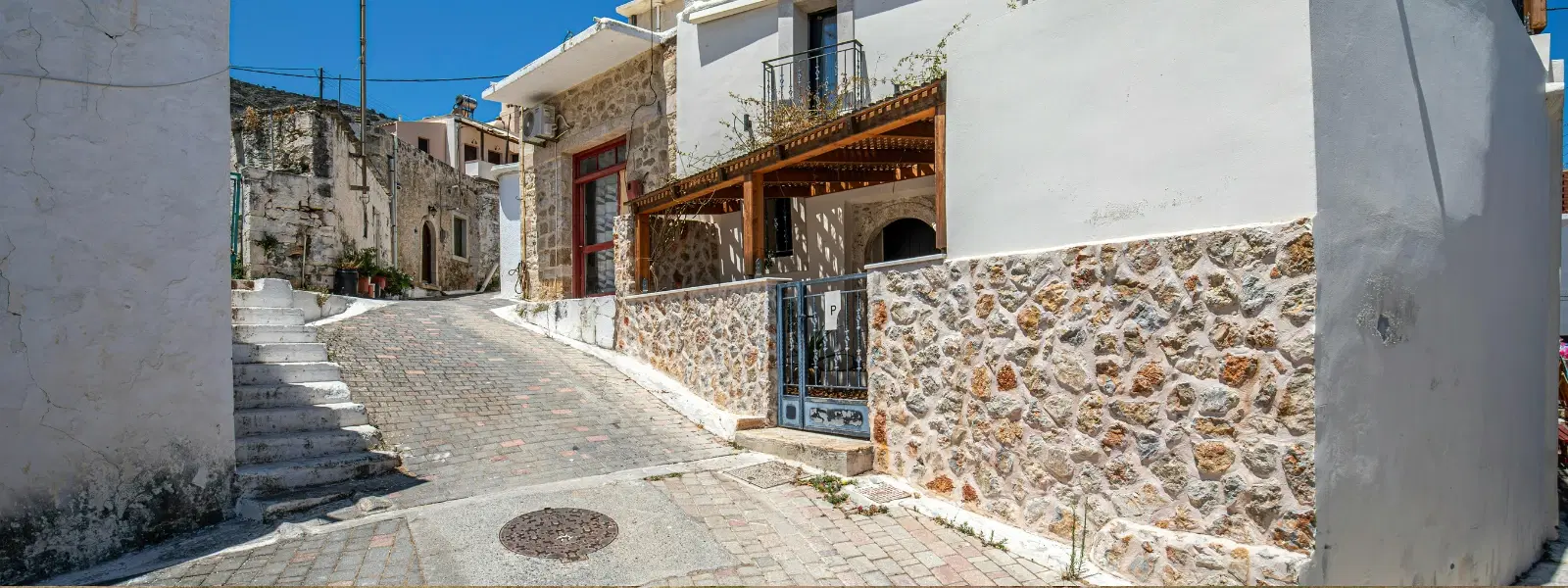
Hotels
•04 min read

Imagine wandering through narrow lanes flanked by centuries-old stone houses, where every structure whispers tales of ancient craftsmanship and a rich cultural legacy. India's stone house towns are not just relics of a bygone era but living chronicles of rustic charm, architectural brilliance, and historical significance. In these towns, the rugged beauty of stone architecture meets the enduring spirit of tradition, inviting travelers to explore a landscape where every corner is steeped in history.
Stone house towns in India are communities where historical stone cottages and traditional stone homes define the urban fabric. These towns are deeply connected to the ancient stone settlements that once dotted the Indian subcontinent. Their structures, built using time-tested techniques, stand as a testament to the art of stone masonry and the vital role of stone architecture in shaping Indian heritage.
The origins of stone architecture in India trace back to ancient times, evolving through dynasties and empires. From the intricate carvings in sandstone structures to the sturdy limestone constructions, these towns are peppered across regions like Rajasthan and Karnataka. They have witnessed centuries of history, from royal courts to humble village life, and continue to captivate visitors with their storied past.
Stone house towns are living museums that embody India's diverse cultural heritage and architectural ingenuity. They reflect a deep respect for nature through sustainable construction practices that offer natural thermal performance. The use of local stones not only provides durability but also connects these structures to the landscape, ensuring they blend seamlessly with their surroundings.
In India, the building blocks of these ancient settlements often include sandstone, limestone, and granite. Each stone type offers unique properties; sandstone, for example, is prized for its workability and warm hue, while granite is renowned for its strength and longevity. These materials give the towns their distinctive, timeless appeal and ensure that structures continue to endure harsh seasonal changes.
The construction techniques employed in these towns are as fascinating as the stone structures themselves. Methods like dry stone construction and precise handcrafted stone techniques have been passed down through generations. Expert stonemasons meticulously carve and fit stones together without the use of modern adhesives, creating intricate designs and robust structures that have survived natural calamities and the test of time.

Today, a blend of tradition and innovation is evident in projects like the zero-cement stone houses in Bangalore. These modern adaptations use time-honored dry stone techniques while embracing sustainable practices to minimize environmental impact. Such approaches highlight that the legacy of stone construction in India is not only preserved but also innovated upon, ensuring that the beauty of stone architecture continues into the future.
Rajasthan is synonymous with awe-inspiring stone architecture. The towns of Jodhpur and Jaipur boast magnificent sandstone buildings that capture the essence of regal heritage. Here, stone houses tell stories of royal lineages and ancient traditions. Iconic examples include thoughtfully restored structures that stand as beacons of both historical pride and modern revival, embodying the vibrant spirit of this desert state.
Moving south, Karnataka offers another perspective on stone house towns with its modern eco-friendly innovations. Bangalore, for instance, showcases the zero-cement stone house, celebrated for its commitment to sustainable living. In Karnataka, traditional methods walk hand in hand with contemporary practices, creating a unique blend that respects the past while looking toward the future.
Beyond Rajasthan and Karnataka, India is dotted with picturesque stone villages that captivate both the wanderer and the planner. These lesser-known gems offer breathtaking views and diverse architectural styles that invite a deeper exploration into India’s stone architecture. From remote mountain settlements to serene rural enclaves, these towns provide an authentic glimpse into a slower, more artful way of living.
One of the key advantages of stone construction is its inherent sustainability. Stone houses naturally regulate indoor temperatures, reducing the need for artificial heating or cooling. Their low-carbon footprint and energy efficiency contribute towards an eco-friendly lifestyle. These benefits make stone house towns a model for sustainable living in a rapidly changing world.
Beyond sustainability, the aesthetic charm of rustic stone houses is undeniable. Their natural texture and color, combined with a commendable ability to withstand severe weather conditions, offer both aesthetic and functional advantages. Many modern architects praise stone architecture for enhancing thermal insulation and even seismic performance, making it a smart choice for enduring construction.

As India continues to modernize, preserving its stone heritage becomes all the more important. Efforts to restore and maintain historic stone villages highlight a commitment to cultural conservation. By embracing traditional construction practices, communities invest in the preservation of history and in fostering future generations’ connection to their rich architectural legacy.
Did you know? Handcrafted stone techniques used in India’s stone house towns not only showcase the skill of stonemasons but also ensure durability and intricate designs that stand the test of time.
Stone houses can be found in various regions across India, including Rajasthan, Karnataka, and Tamil Nadu. Jaipur and Jodhpur are particularly famous for their stone architecture.
Sandstone, limestone, and granite are commonly used for house construction in India due to their durability, aesthetic appeal, and natural thermal properties.
The zero-cement stone house in Bangalore is a sustainable architectural innovation that uses dry stone construction techniques, eliminating the need for cement while ensuring structural stability.
The Stone House in Ooty, built in 1822, is regarded as one of the oldest and most historically significant examples of traditional stone architecture in the region.
India’s stone house towns are a living testament to the country’s rich cultural and historical fabric. Through exploring heritage in Rajasthan, witnessing modern sustainable practices in Karnataka, or discovering hidden stone villages, readers gain an enriching perspective on stone architecture in India. These towns offer more than history—they provide inspiration for sustainable living and a deep connection to India's artistic past, ensuring that these magnificent structures continue to inspire generations to come.